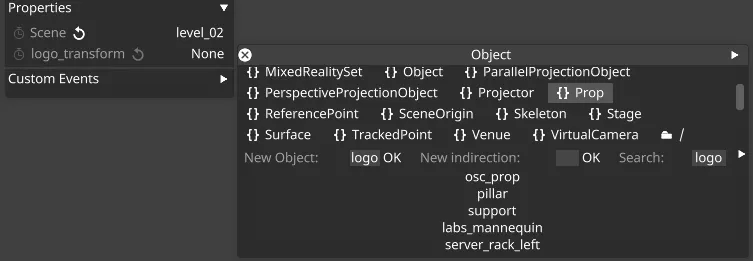3D object transforms
This topic covers the steps needed for configuring 3D object transforms within an Unreal Engine project for use with RenderStream. This feature allows you to control the full range of 3D object transforms (translation, rotation and scale) of an object in from using a null object.
This feature allows you to control the full range of 3D object transforms (translation, rotation and scale) of an object in Unreal Engine from Designer using a null object.
If you wish to expose the Transform (i.e. position, rotation and scale) of an Actor, you must ensure that the Actor’s Mobility is set to ‘Movable’ from within the Details panel. If this is not done, Designer will only be able to control the Actor’s scale. Follow these steps to configure the 3D object transforms of an object within an Unreal Engine sce
Unreal Engine Level Blueprint setup
Section titled “Unreal Engine Level Blueprint setup”- To control the transforms of an Actor (eg. Cine Camera Actor, Static Mesh Actor) from within Designer, start by dragging the Actor into the Level Blueprint.

- Drag the blue pin from the a new node in the Event Graph. When prompted to search for a new action, search for “Set Actor Transform”.
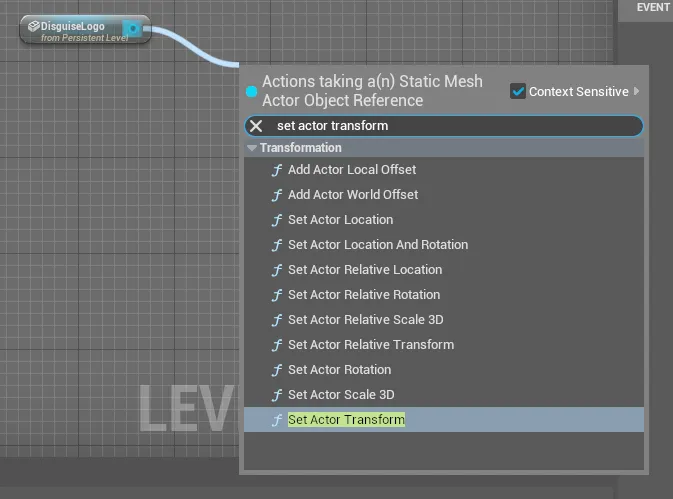
- Right-click on the “New Transform” and select the option to “Promote to Variable”.
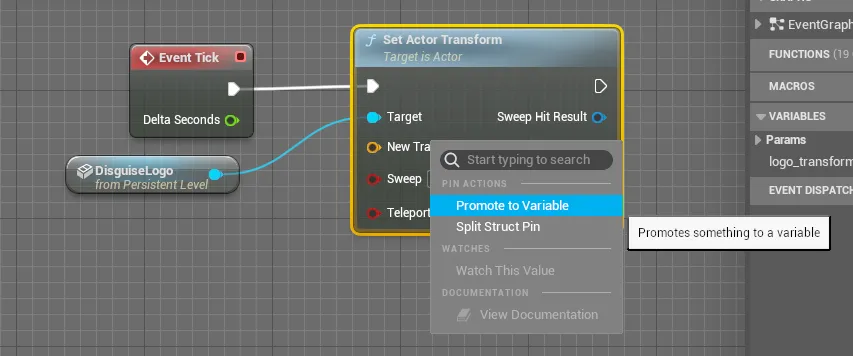
- The next step is to link this to the “Event Tick”.
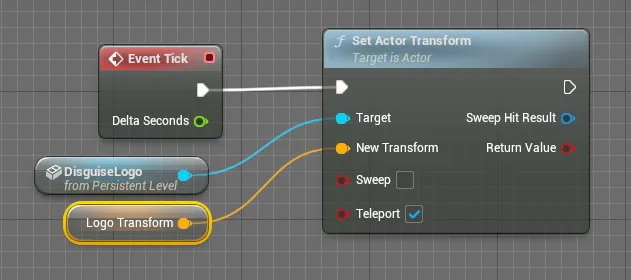
- Now Compile the Blueprint. This will give you the ability to adjust the transforms of that object. Be sure to set “New Transform” to Instance Editable.
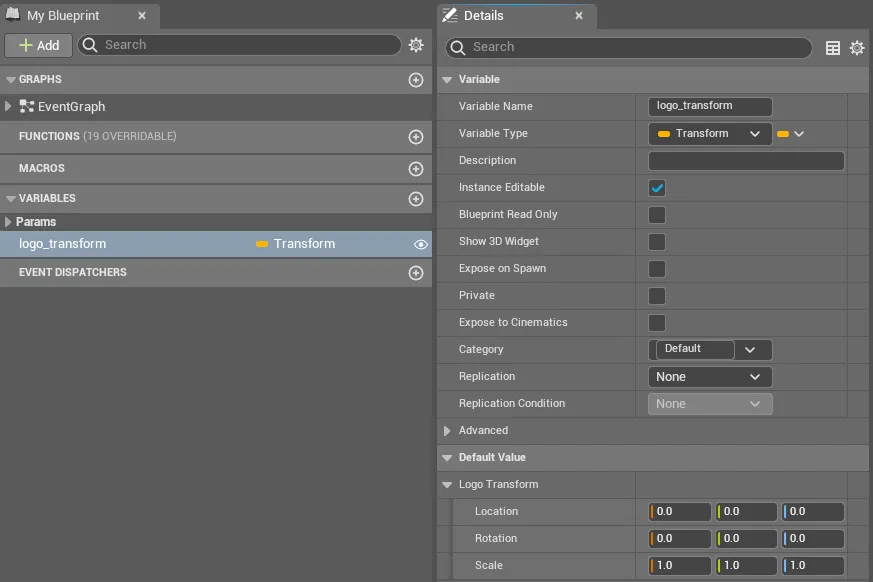
- The last step is to make the object Movable. In the default scene all the objects will be set to static; this can be changed in the Object details panel.
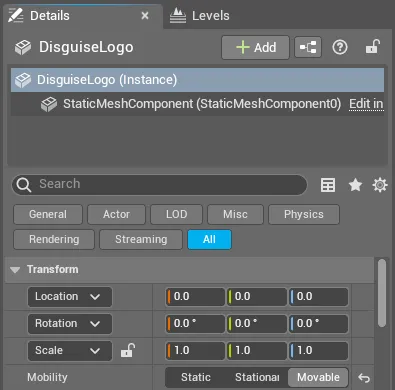
- Save the project.
- You can now control the Actor from within by selecting a prop to link its transforms to from within the RenderStream Layer Properties tab.
